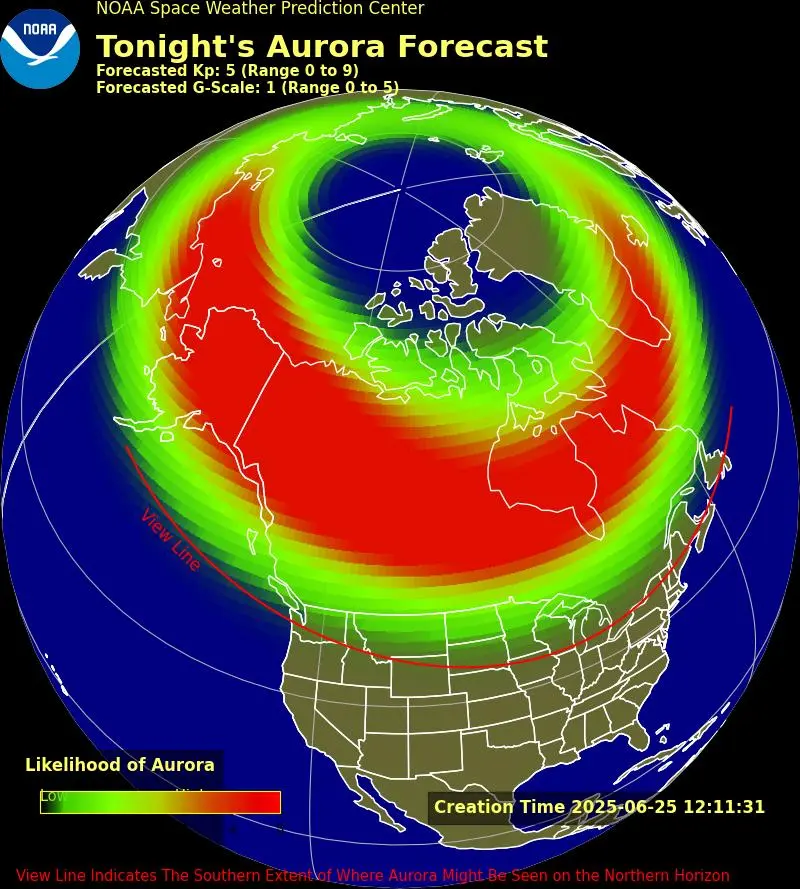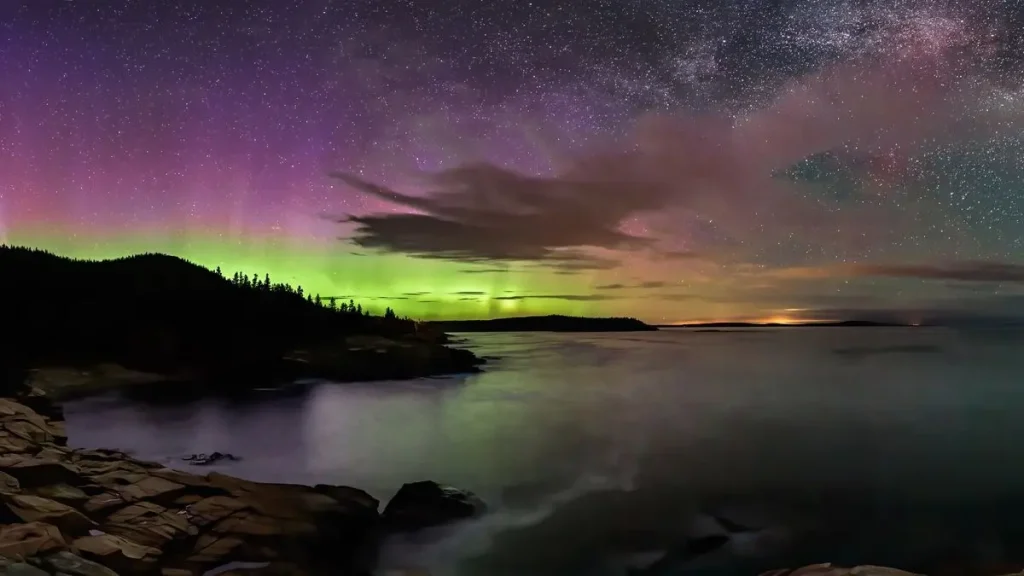What Is the Aurora Borealis Forecast?
A stream of high-speed solar wind traveling from a coronal hole on the Sun is expected to trigger G1 to G2 geomagnetic storms tonight, June 25. NOAA’s Space Weather Prediction Center (SWPC) has forecast the Kp index peaking around 5.7—a moderate level indicating a high chance of visible auroras.
Where Can I See the Northern Lights Tonight?
Experts say that under aurora borealis forecast conditions, the auroral oval will dip far enough south to be visible over 14 U.S. states. From Alaska to South Dakota, and including New York, Oregon, Idaho, Michigan and more, night-sky enthusiasts could glimpse the glow on the northern horizon. A linked source predicts visibility in:
-
Alaska
-
Minnesota
-
North Dakota
-
Montana
-
Maine
-
Michigan
-
Wisconsin
-
Vermont
-
New Hampshire
-
Washington
-
Oregon
-
Idaho
-
New York
-
South Dakota
When Should You Look Up?
The best time to see the northern lights tonight will be around 1 a.m. local time—when the sky is darkest. Viewers are advised to be in a north-facing, dark-sky location away from city lights for the clearest view.
What Conditions Affect Visibility?
-
Geomagnetic Activity: Moderate storms (G1–G2) are essential for southern aurora sightings.
-
Light Pollution: Minimize it—rural or open spaces are preferred.
-
Clear Skies: Clouds can entirely block the display.
-
Summer Twilight: Near the solstice, long daylight hours shorten the viewing window—by 1 a.m., darkness improves.
Aurora Borealis Map
| State | Visibility Potential |
|---|---|
| Alaska | Very High |
| Minnesota | High |
| North Dakota | High |
| Montana | High |
| Michigan | High |
| Wisconsin | High |
| Maine, Vermont, New Hampshire | Medium to High |
| Washington, Oregon, Idaho | Medium |
| New York, South Dakota | Lower but possible under clear skies |

Stay updated via:
-
NOAA’s SWPC three‑day Kp forecast
-
Aurora forecast maps like Space.com’s live blog
These tools offer real‑time chances and locations for aurora visibility.
Many of these states fall under tonight’s Aurora Borealis map showing potential for sightings.
Tips to Maximize Your Viewing Experience
-
Arrive early, after sunset, and stay until 1–2 a.m.
-
Find a clear northern view with minimal light interference.
-
Use a smartphone tripod and Night Mode for better photos.
-
Check live Kp updates via NOAA or apps like “My Aurora Forecast & Alerts.”
Why The Burst of Activity?
Earth is currently in the Sun’s solar maximum, increasing the frequency and intensity of auroras. The current aurora display is fueled by solar wind hitting Earth’s magnetic field, pushing the auroral oval unusually far south.
Tonight’s aurora borealis forecast promises a rare summer spectacle across northern parts of 14 U.S. states. With G2 geomagnetic activity and clear skies, the odds are strong. So ask yourself: “Where can I see the Northern Lights tonight?” If you’re in one of the highlighted zones, step outside after dark—especially around 1 a.m.—and look north. For many, this could be an unforgettable memories under nature’s own light show.


